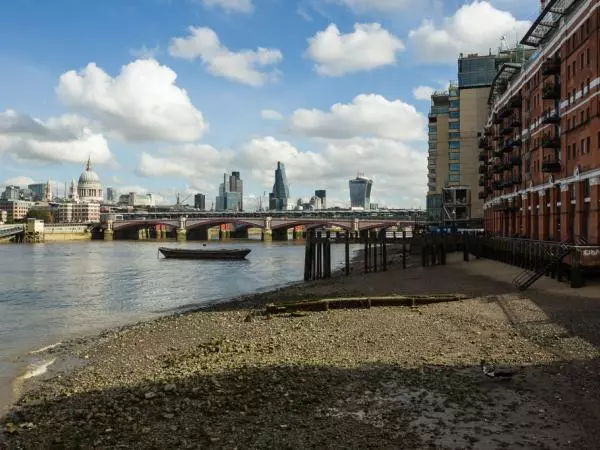Outside the social rituals of art, Pullio frequented the cultural environment of the Navigli, where she met Giovanni Campus and Mario Nigro, who had joined the Movimento Arte Concrete founded by Gillo Dorfles, and took up abstractionism. Then there was Fontana, and Minguzzi, who for a while had his workshop in the same building as hers in Milan. All of these artists were drawn towards an international panorama. So this was the Milan of the period in which she had the good fortune to find herself, with its art hubs focused on meeting and exchange, long before it sank to the levels of today’s contemporary “market”. These were the places that have left their mark on the history of art, such as the Galleria Blu, the Vismara and “Il Milione”, which showed work by the group of abstract painters Soldati, Rho, Radice, Reggiani, Bogliardi and Ghiringhelli, and also introduced Georges Rouault and Kandinsky to Italy.
Still very young, Adriana Pullio witnessed the lively diatribe between abstraction and figurative realism, in contrast to the informal and to geometric abstraction – an opposition that later became hierarchical, identifying the rift between the two cultures, figurative and abstract, where two ideologies and, unfortunately, two political experiences, each had their own distinct galleries. Meanwhile, Pullio stuck to the expressive means and to the foundations of geometric abstraction, which are line and colour, and as form, the rectangle, which does not have the ambiguity of the curve. Indeed the centre of her canvases is everywhere, whilst the circular perimeter is nowhere. Because at all points something crucial can be found, in the use of the primary colours yellow, blue and red. She assembles line in which imitative references are no longer identifiable. She dismisses the figure and attempts - successfully - to present images mediated by the perspective of colour, and by the relation between plane, space and profile; as in a kaleidoscope from which to draw the inspiration that blazed the trail followed by the more innovative art groups of the later twentieth century. She worked by empathy, as an artist whose art is her own existence, representing its independence and at the same time its accessibility to a European and extra-European panorama. Moving steadily away from negative situations, she followed the adventures of those who felt the urgent need, and some the duty, to implement a new type of art fired by pictorial enthusiasms and provocations, or simplifications. Some of these artists have been close, and played an important role in her life. Among these were Mauro Reggiani and Mario Radice (to whom she dedicated her thesis), and above all Reggiani for whom her admiration and friendship led to collaboration. In fact, from 1967 up until his death in 1980, she shared his studio in via Solferino, Milan, as well as at Albissola Marina in Liguria.
Pullio began as a total artist, doing drawings, inks, engravings, painting and sculpture. She painted in oil, and was attracted by engraving. She also did some early etchings, which in 1968 were shown at Palazzo Pretorio in Arezzo with the group exhibition “Italia bianco e nero”, where the prizewinners were Giorgio Bompadre, one of the leading masters of engraving, with Marino Marini and Renzo Vespignani. Initially she also did some sculpture, and to good effect, seeing that in 1962, at the “Premio Avezzano” awarded to Remo Brindisi, she received the “Marsica prize” for her “Girl’s Head”.
In that avant-garde Milan she made her way, in the certainty that for artists and art, inspiration can come only from culture, albeit in events not without the political, social and intellectual conditionings and ties that permeated creative activity in the mid-twentieth century. For her too, like many other artists, they harbingered evolutions affected by difficult economic times. In fact, much importance was attached among “left wing” circles to “social” issues. She herself put these into practice, through her readiness to help charitable projects. In 2013 she showed work in a group show at “L’Arsenale” in Iseo, for “Art in Support of Culture”, in aid of that Foundation. And likewise the following year, with the Franciacorta Rotary Club, for a charity auction. After that, she chose to have only a few, carefully chosen exhibitions and public encounters, due to her aversion to the banalisation of an art market lowered to ugliness and uselessness. One such was a solo exhibition, in Milan at the “Galleria Ciovasso” in October 2008, held at the same time as the exhibition at the “Galleria Blu” by Guido Biasi, an exponent of the Movimento Arte Nucleare with Baj and Dangelo. Meanwhile she also had exhibitions at Studio A&A in Iseo in 2010, and at the “Galleria Scoglio di Quarto” in Milan in 2017.
In her work, colour, related to an atmospheric light, thrives as a necessary adjective of her creative idiom, indefatigably modulated and interwoven with her own life; a life which prompts her, for example, to leave Milan for a number of days each week and to live in Iseo, on the shores of the lake where she has her studio and which, she says, gives her the right dimension for her painting. Her inexhaustible artistic energy guides her path through wise contemporary projections of art history and aesthetic sensibility, corroborating her studies in circumstances and situations absorbed in the course of a time filled with stimuli and progressive philological multipliers, as if in seasons to be set down on canvas.
Today her art is focused on the ethical values of culture, and not on the market; on the urge to do more rather than on the hysteria of the déjà vu, on the pleasure of dedicated moments rather than on shoddy output. The world in crisis that we are living in today has put this artist, too, in difficulty, where the consumer society is losing the grammar of excitement and aesthetic endeavour, which she instead proposes.
 Share / Save
Share / Save





Comments 0
Say something